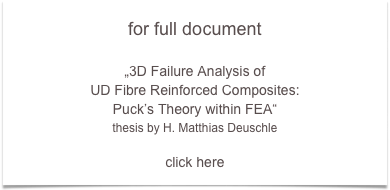Abstract
The Puck fracture criteria for unidirectional fibre/polymer composites are widely accepted for physically based prediction of failure and post-failure degradation behaviour. The core of the theory, the inter-fibre fracture criteria, are criteria of the Coulomb/Mohr type. Accordingly, the inclination of the fibre-parallel fracture plane – in other words: the fracture angle – has to be determined in the first analysis step. Afterwards the fracture stresses acting on the predicted fracture plane can be determined. Since the theory has first been introduced continuous efforts have been taken to reduce the computational cost of such two-step approach. Since 1996 a closed analytical solution has been available for in-plane loadcases including
(σ1 ,σ2 ,τ21 )-stress combination which are dominant in thin shells. During the authors' participation in the World Wide Failure Exercise II now an analytical solution for triaxial (σ1 ,σ2 ,σ3 ,τ23 )-stress combinations has been derived. This
paper presents closed analytical solutions for fracture angles, fracture stresses and stress exposure ratios useful for an efficient design process. Additionally, the understanding of intrinsically brittle fracture has been significantly improved and a mathematically and mechanically consistent classification of brittle behaviour is provided.
Key words: Failure prediction, fibre reinforced composites, analytical solution


